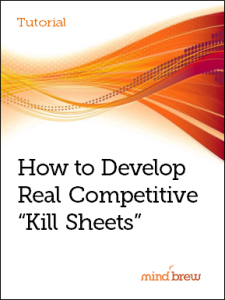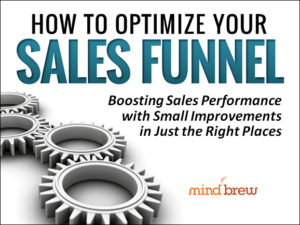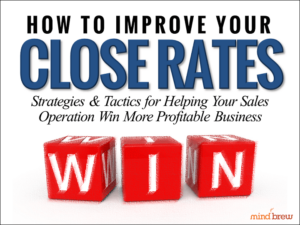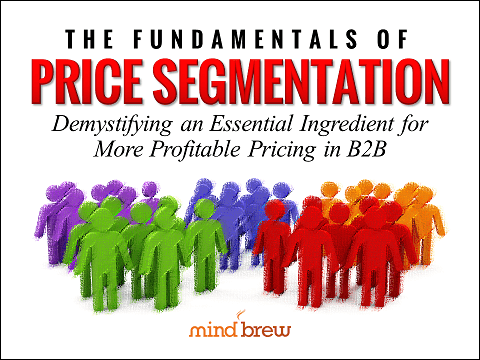If you ever played competitive sports at any level, you know how valuable competitive intelligence can be. Great coaches love to have their players watch video (or back in the day, tape or film) of opposing teams in action. At a minimum, it’s very helpful to know that the other side has a really great quarterback or a star point guard or a center fielder who can hit a mile.
The best coaches take things a step further. They don’t just tell players what they’re up against, they give them a strategy for shutting down the competition. They tell the team to blitz the quarterback or to double-team the star point guard or to walk the center fielder.
B2B sales teams need this same time of strategic guidance.
A lot of organizations put together “kill sheets” that are really nothing more than competitive profiles. It gives the salespeople information about other vendors’ products, services and market size, but it doesn’t tell them how to counter the opposition’s strengths and exploit their weaknesses. While your star salespeople may be able to take this minimal information and draw meaningful conclusions that help them in the field, it’s simply not enough for most salespeople. And it doesn’t help the company convey a consistent message.
Instead, a true competitive kill sheet gives the sales force a very specific strategy for positioning your solution as the best option while de-positioning the alternatives. It highlights the criteria that are most important to a given target segment, explains why the competing alternatives are unsatisfactory, and demonstrates how your solution is superior.
You can see an example of a good kill sheet in the Competitive Kill Sheet Development Workbook. Like the example, your kill sheet should be fairly simple. A one-page PDF or laminated sheet that sales representatives can carry with them for reference works pretty well. (Although you may have several kill sheets for different market segments and different products.)
But don’t be deceived by the simplicity of the final product; it does take some work to create a really effective kill sheet. SellingBrew has a helpful tutorial that walks you through the process. It’s not rocket science, but it does take a little bit of thought.
The end result is well worth the time and effort. It not only helps the sales team convey a consistent message, it helps them accomplish their ultimate goal: more sales wins.
How to Develop Real Competitive "Kill Sheets"

Competitive kill sheets are a great tool to help salespeople in the field. But most so-called kill sheets are nothing more than glorified competitive profiles. In this concise tutorial, learn how to develop real, strategic competitive kill sheets that highlight and reinforce the competitive differences that actually matter to prospects.






